
Feel free to add tags, names, dates or anything you are looking for

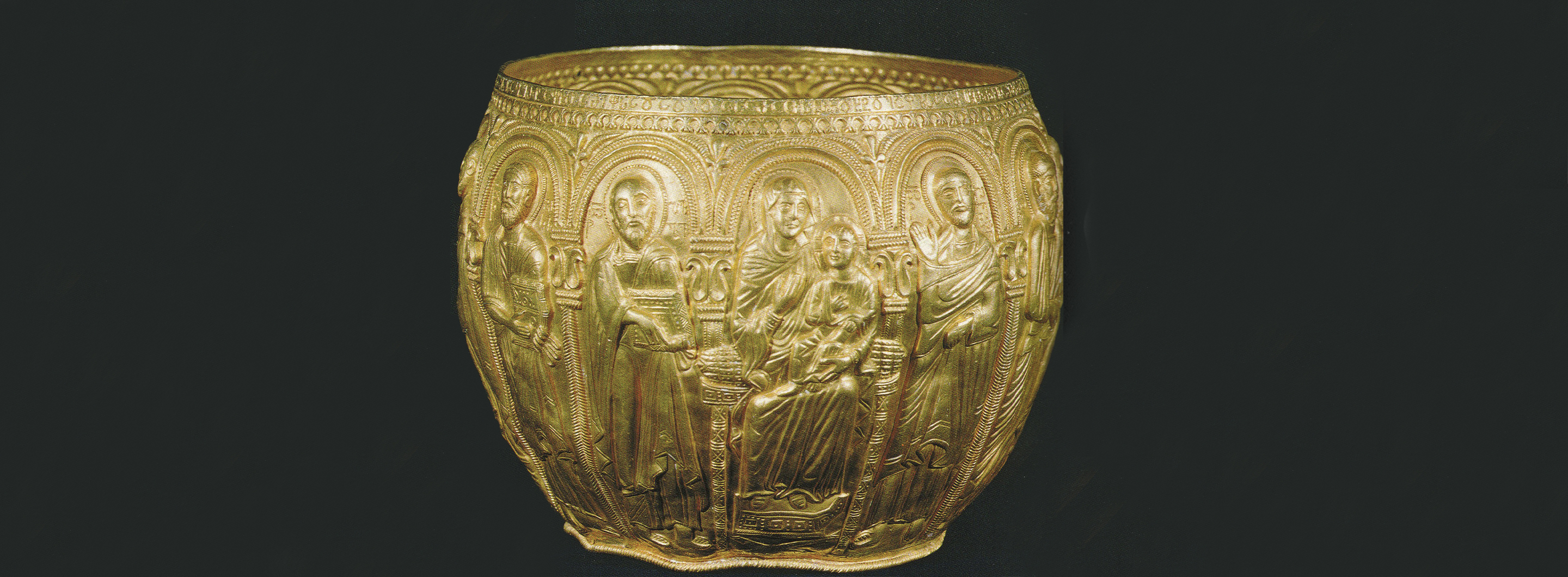
Liturgical vessels and implements, such as chalices, liturgical fans - rhipidia, censers, are inseparable parts of the church Services. These precious metal objects decorated with religious imagery were produced in huge numbers over the centuries in medieval Georgia, but very few of them have preserved. The treasuries of churches and monasteries possessed numerous liturgical objects, most of which were donations made by believers.
Each type of the liturgical implements had its own symbolic meaning, often traced back to Sacred History. Chalices, communion vessels, which represent the cup that Jesus offered to the apostles during the Last Supper, were used in the liturgy from the early Christian period. Only few medieval chalices have preserved in Georgia. One of them, is the golden chalice with the embossed decoration depicting enthroned Christ, the Virgin and Child accompanied by the Apostles under arches.
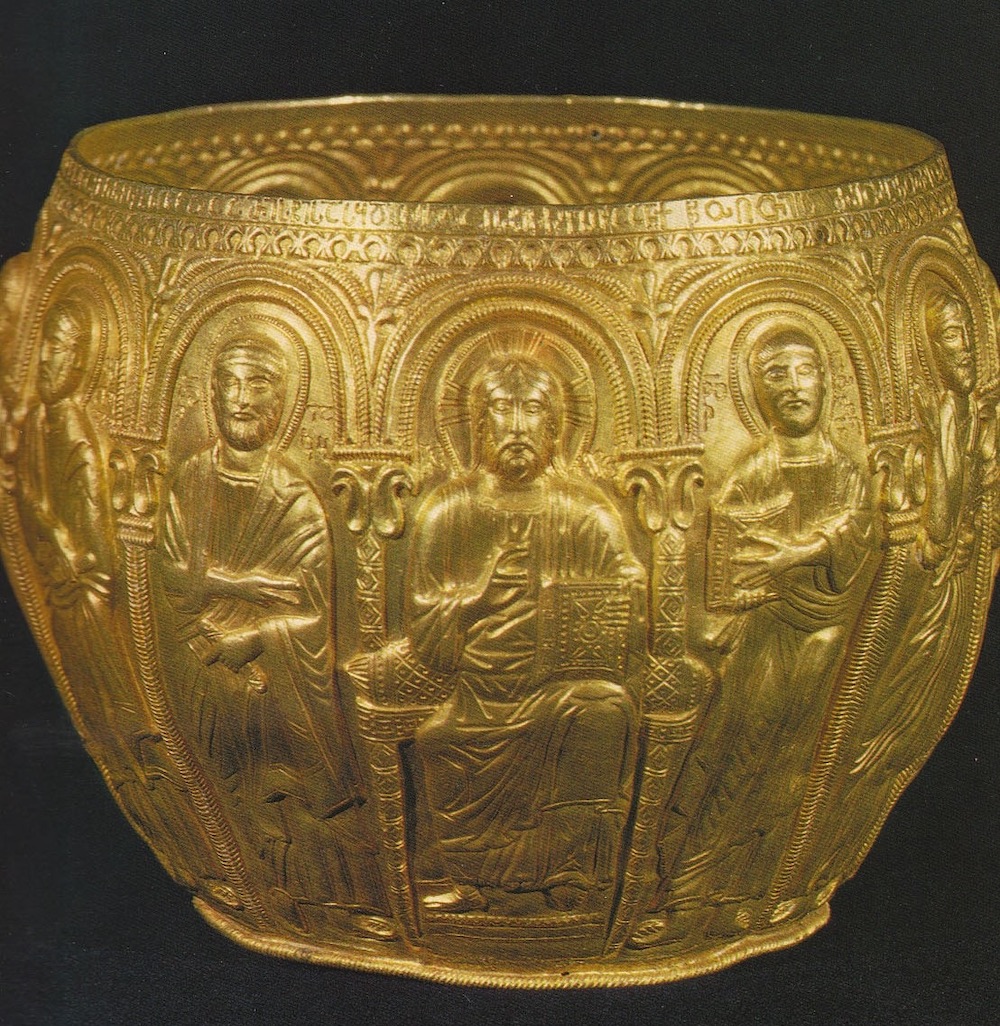
Golden Chalice from Bedia
The dedicatory Georgian inscription running on the rim of the vessel reveals that a Georgian King Bagrat III (961/975-1014) and his mother, Queen Gurandukht donated it to the church of Bedia (western Georgia), which was built by the King. It is significant, that the inscription with plea of Salvation is addressed to the Virgin. The stylistic features of the repousse imagery correspond to the stylistic trend of the epoch. The iconographic system of the Bedia chalice, an excellent example of court art, finds close affinities with the 10th century sardonyx chalice of the Byzantine Emperor Romanos from Venice.
The decoration of the Bedia chalice served as the prototype for the now lost the 10th century silver chalice from Ilori (western Georgia).
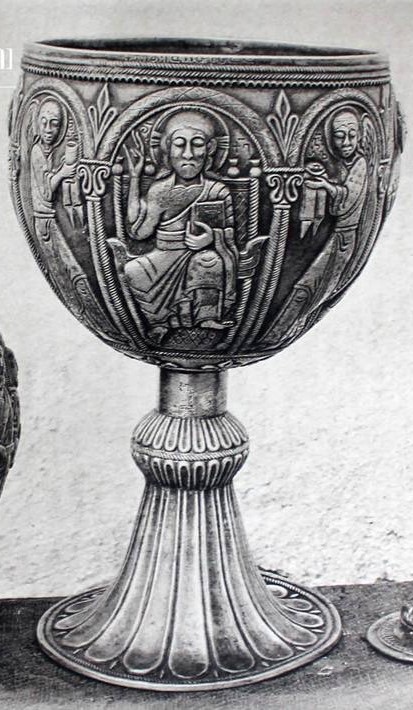
Silver chalice from Ilori, 10th century
The fragments of the 10th century chalice, featuring the same composition scheme, were later rearranged into rhipidion’s case, which belonged to Obuji Church.
Liturgical fans (rhipidion in Greek, flabellum in Latin) were integrated into the church rituals since the Late Antiquity (3rd-6th cc). The earliest preserved Georgian fans date from the mid-10th century. Although they are modeled after early Christian ones, they have their own distinct form and design. Significant collections of ripidia are housed in the State Museum of Art, museums of Zugdidi, Kutaisi and Mestia.
The Georgian medieval silver-gilt fans are quadrifoliums: four medallions are arranged around the central round disk, forming a cross (liturgical fans from outside Georgia are predominantly round in shape). The canonical program of the relief decoration on these objects consists of seraphims, tetramorphs, and angels.
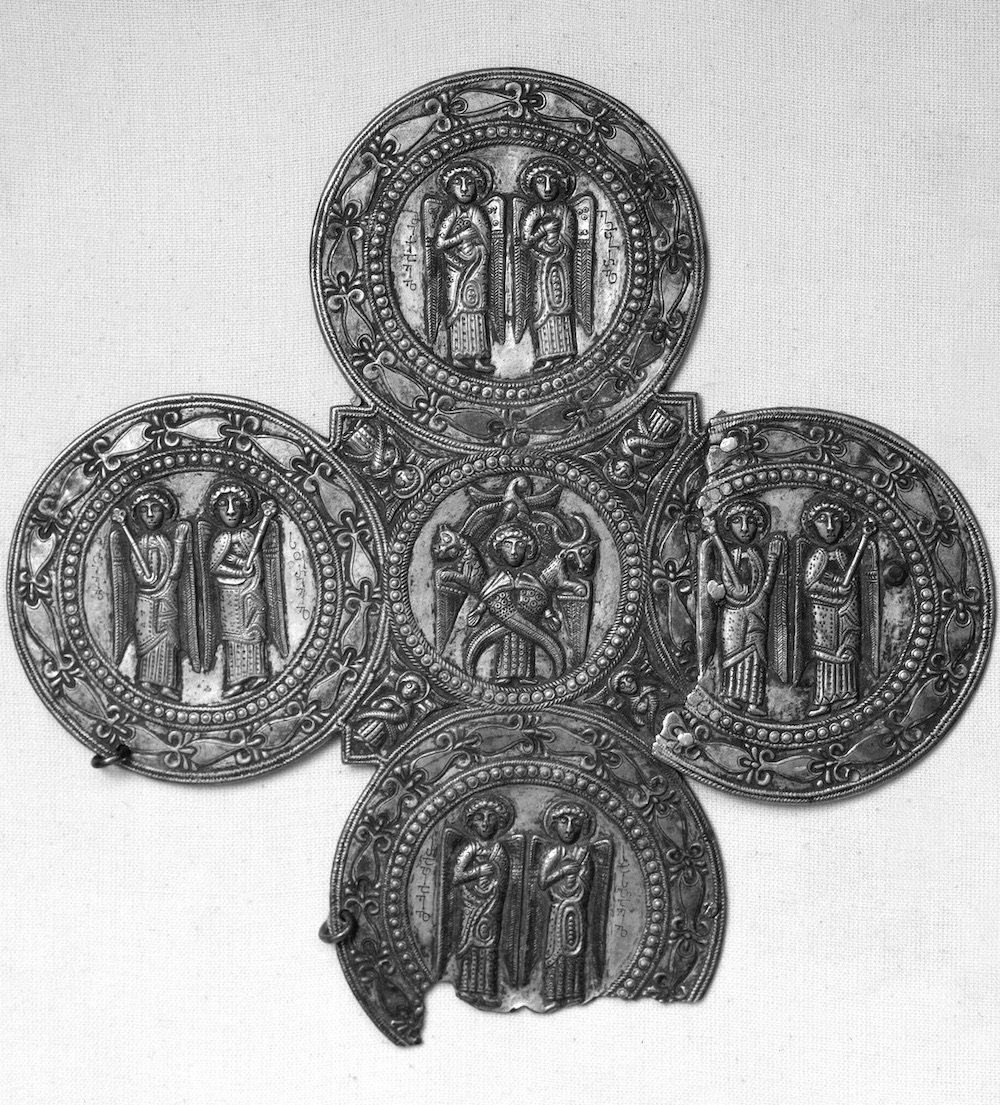
Rhipidion, 11th century from Kutaisi
The 10th century Obuji rhipidion, which is also an example of royal court art, is the earliest preserved Georgian liturgical fan. It has an inscription in Asomtavruli script mentioning King Giorgi of Abkhazia. Its decoration consists of images of six-winged seraphim, tetramorphs, and angels. On the lower disc there is an image of the Mother of God with her hands holding before her chest. This type of the Virgin is an embodiment of her protection. All images are accompanied with engraved titles.
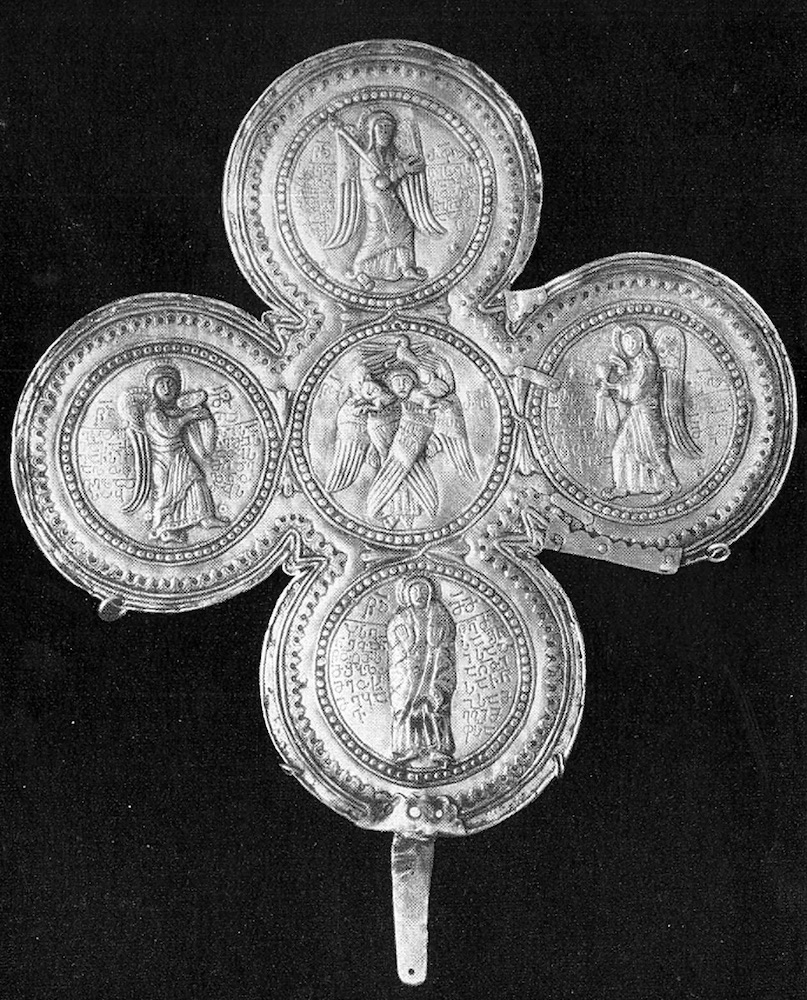
Silver Rhipidion from Obuji, 10th century
The inscriptions on the 10th – 11th century Georgian liturgical fans provide important information, about their production and use. One of the fans from Zarzma Monastery features an inscription of the donor – Georgian nobleman Parsman Laklakidze. The inscription refers to church of Zarzma for which the fan was created, as well as its place within the church, in front of the icon of the Transfiguration.
.png)
Silver Rhipidion from Zarzma, 11th century
.png)
Silver Rhipidion from Zarzma, 11th century
The inscription of the other rhipidion from Zarzma preserved the name of its author - the goldsmith Tutai. The text also mentions other individuals: Eristavi Giorgobinai, Father Zosime, and bishops.
The unique openwork rhipidion from Mestia demonstrates the original interpretation of the traditional forms of the liturgical fans.
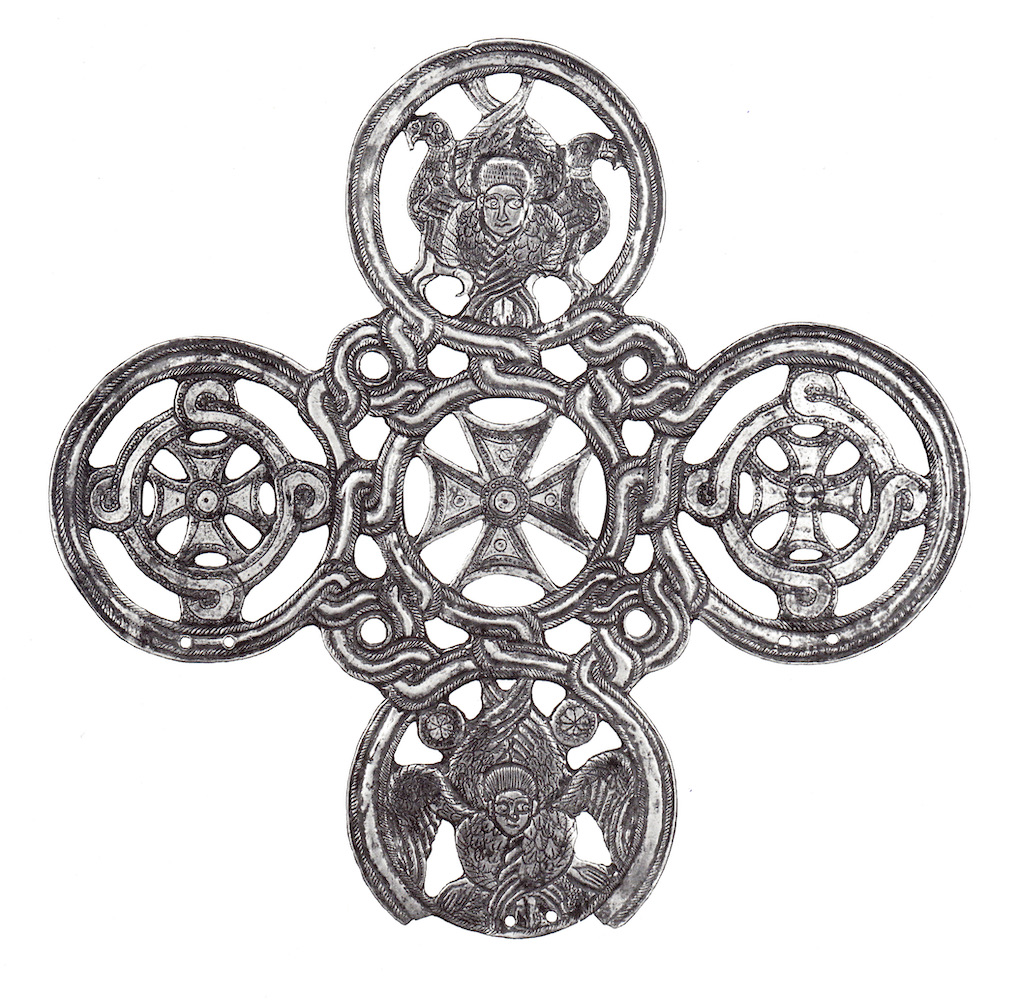
Openwork Rhipidion from Mestia, 11th century
Censers also are essential utensils in the performance of the Christian rituals. The metal vessels designed for the incense burn were widely used from late antiquity onwards. In Georgian museums and churches of Svaneti are housed significant examples of these liturgical implements. Some early Christian cast bronze censers decorated with the New Testament relief compositions preserved in Georgia originate from Syria-Palestine. They served as models for Georgian masters for their own production. One example is a silver censer dated back to 10th-11th century, that was manufacture in a Georgian goldsmith's workshop is an illustration of the mentioned practice.
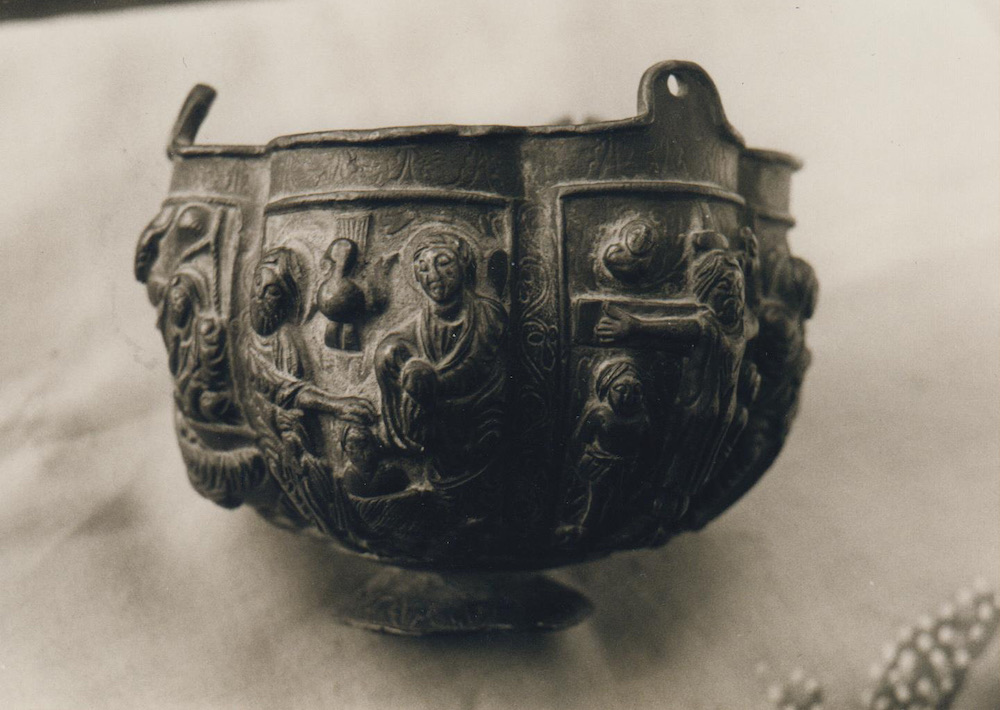
Silver Censer. 10th-11th centuries
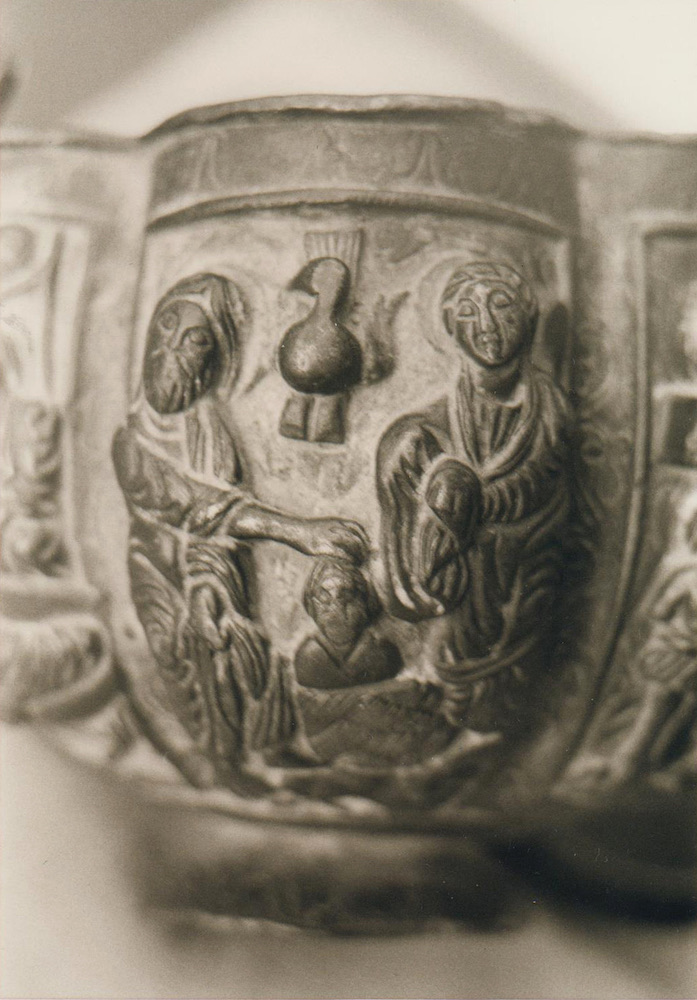
Silver Censer. 10th-11th centuries. Detail
The liturgical silver and bronze objects from Georgia demonstrate the uninterrupted early Christian tradition in medieval Georgian church art over centuries.